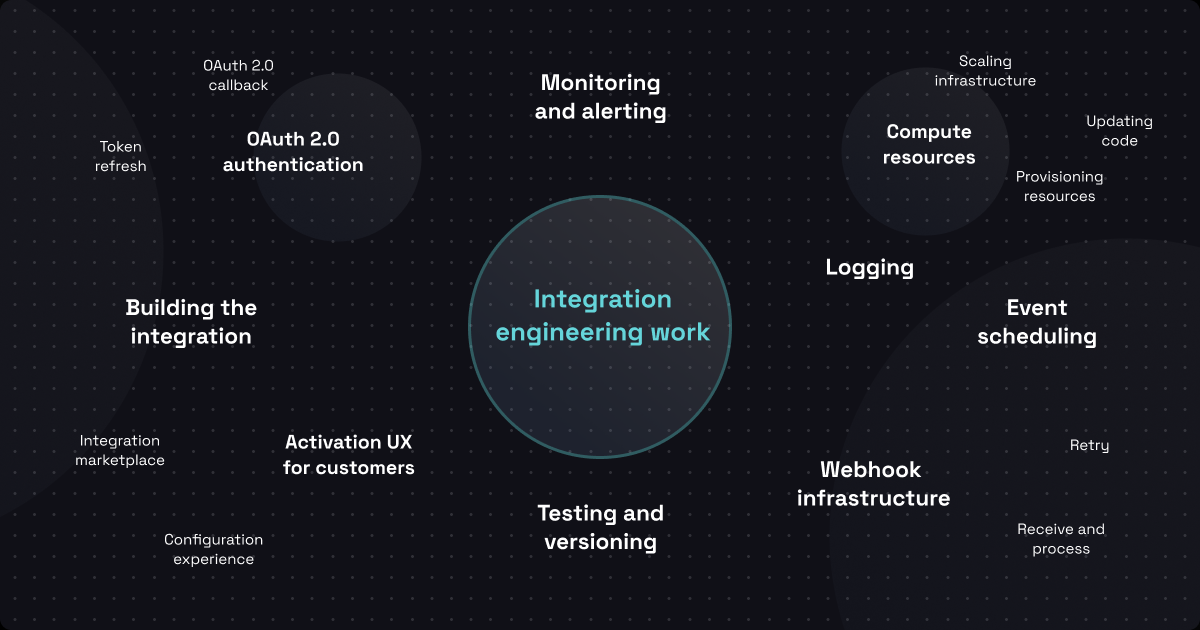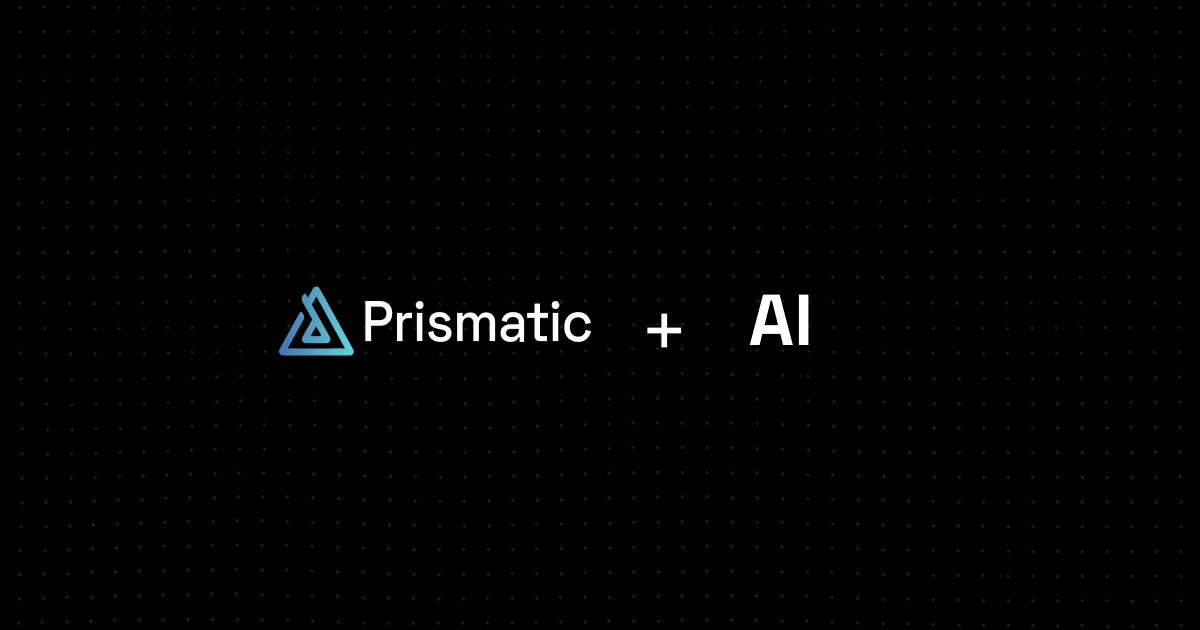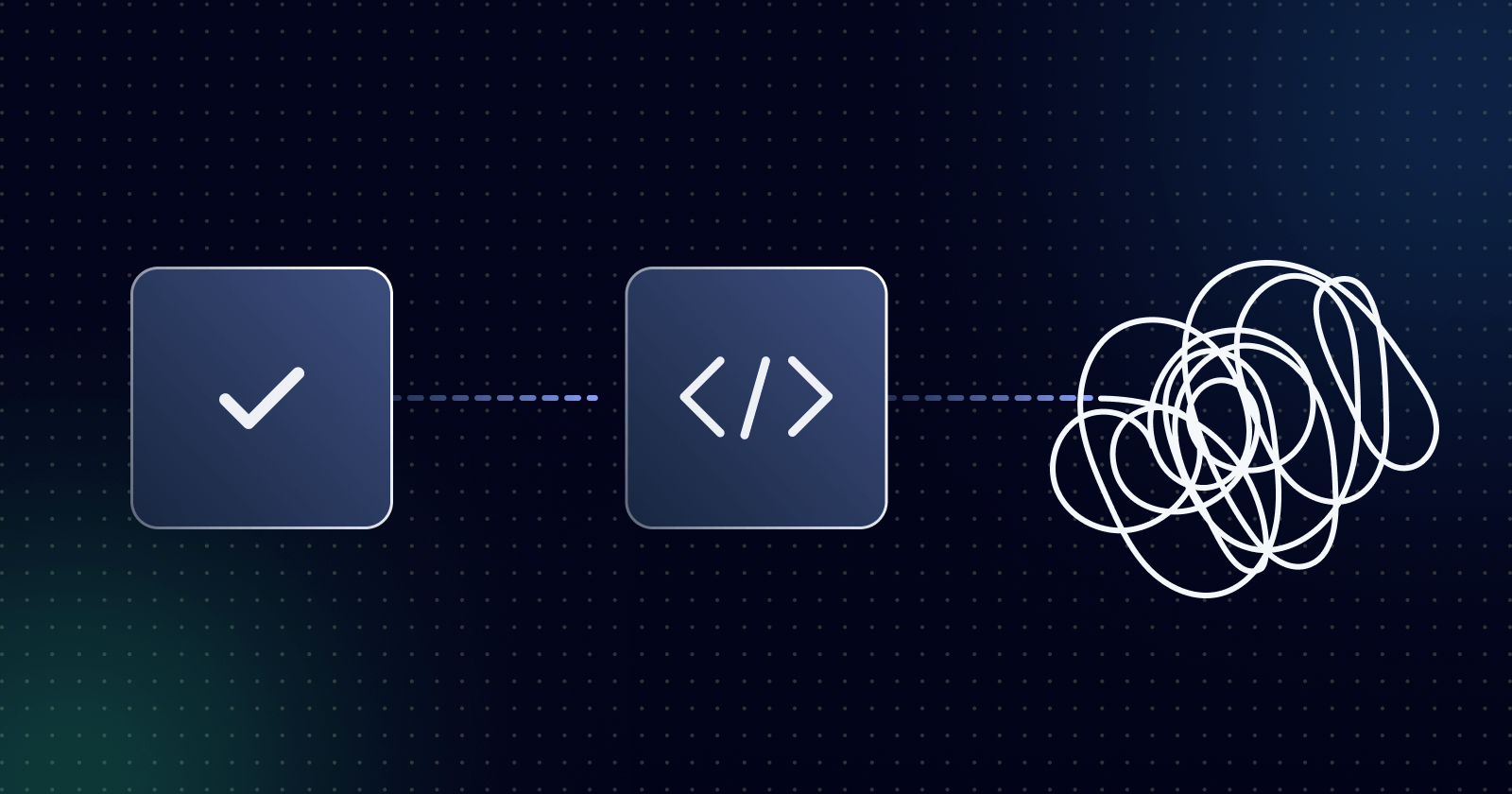Tech debt (technical debt, code debt) is incurred when a software development team prioritizes speed over everything else.
In-house B2B SaaS integrations, by their nature, are a substantial cause of tech debt. Those integrations are usually custom-built, hard-coded solutions that are time-consuming to maintain, scale poorly, and divert engineering resources from core product development.
As an executive, you know how tech debt can impact your company. Integration tech debt increases integration development, deployment, and management costs, slows time to market, and increases churn.
But there’s a better way: a purpose-built integration platform that lets you scale without compounding tech debt. Prismatic includes everything needed to create powerful customer-facing integrations and enables your team to streamline integration delivery and enhance your customers' UX.
Here's how to remove your product's current integration tech debt and permanently halt its growth.
Establish an integration strategy
You don't have an integration strategy if integrations don't regularly come up in your product strategy discussions. But you should. And you don't even need an embedded iPaaS to do it.
You can't treat one integration the same as another. At a minimum, you need to consider strategic, tactical, and legacy integrations:
- Strategic – These are generally the ones that have broad customer applicability (and are often the ones your competitors are doing).
- Tactical – This might be something you need to land a specific customer. Or, it may be something you need to keep a customer (or keep them happy). There's usually some urgency involved.
- Legacy – Existing integrations that may or may not need to be replaced any time soon. But, if they are powered by another third-party system, you probably need to start thinking about them.
Set up some rules for prioritizing integrations and stick with them.
Formal and informal tech partnerships can also increase integration value. Whether entering into mutual benefit agreements or simply setting up NDAs for use of APIs and related third-party technology, having a plan for working with tech partners can make things much easier for everyone involved.
Make integrations a key part of product development by including them in resourcing. Figure out what makes sense for your company and dedicate a percentage of dev time to building the integrations that will help drive your product forward.
We win a lot of business because of our integration strategy. [Our] customers choose us in part because we have the integrations they need, or [because] we can confidently commit to being able to deliver them in a reasonable time.

Setting quantifiable targets for integration-related things (like reducing integration COGS by 30% in Q2 or enabling your customers to build an average of three integrations each by EOY) and including those initiatives in your roadmap ensures that integrations remain in focus for your entire team. You can check out our post on outcome-driven roadmaps for all the details.
Your strategy should include an embedded iPaaS, which will be essential for offloading infrastructure maintenance and enabling devs to write less code.
Offload infrastructure maintenance
Maintenance is something that can sneak up on all of us. We dedicate so much time and effort to creating something and putting it in place, but then we get the idea that things should keep running without much help until a few years from now.
But that's not the real world. A third-party could release an updated API just a few days after your team deploys a new integration based on that API. Internal servers laboring quietly for the last five years could fail outright, taking down integrations for dozens or hundreds of your customers.
That's why it makes sense to use Prismatic, a dedicated integration platform with a team that ensures updates are applied, security and compliance concerns are addressed, and compute resources scale as they should, when they should.
Prismatic has really, I think, found a nice balance in where our engineers are able to get in and actually still write code and control things a little bit more, but we can offload a lot of the maintenance and scalability [for] each of those integrations.

As noted elsewhere, building an integration isn't the hard part; it's all the other pieces that bog down your devs. From the built-in logging, monitoring, alerting, and retry functionality to multi-tenant hosting for your SDLC, Prismatic provides everything necessary for your team to focus on solving your customers' unique needs by building integrations that are first-class extensions of your product.

Without all of the maintenance overhead, your team can reduce tech debt by focusing on the nuts and bolts of each integration rather than building a "good-enough" back-end that's neither good nor enough to support a scalable, sustainable integration strategy.
Enable devs to write less code
As a direct result of moving to an embedded iPaaS, with all the benefits of leveraging that integration platform, your devs will write much less code.
The most significant code reduction comes from Prismatic itself. Since your devs don't need to create all the infrastructure we just discussed, that reduces the code they'd need to write by 80% or more compared to in-house integrations and lets them focus on the specific business logic, the part that your customers care about and interact with.
We also have a low-code designer (for non-devs) and an SDK (Spectral) that enables devs to write integrations in their favorite IDEs. In addition, devs can create custom connectors and other reusable code modules for use across the full range of integrations your customers need.
Prismatic is a platform to supercharge your integrations. It provides an integration framework that you can use to build components which can feed hundreds of integrations.

Your team can also take advantage of all our pre-built components, which range from API connectors for common apps like Salesforce and HubSpot, to various helper components that enable everything from branching to data mapping.

Your team can use GitHub or another code repository to incorporate integration code directly into existing workflows for CI/CD. Once again, this helps to streamline development and cut down on maintenance.
Then, when you productize your integrations, you'll be able to deploy a single integration to any number of customers while ensuring that individual customers can configure that integration to meet their specific needs. This write-once-deploy-many approach helps to keep your devs from writing custom code for every customer, which is often the case for in-house integrations.
The best part of having your devs write less code is that they can focus on writing excellent code for the integrations your customers need. And that's a great way to prevent additional tech debt from accruing.
Future-proof your integrations with embedded iPaaS
Adopting Prismatic can reduce your tech debt by offloading infrastructure maintenance, and enabling devs to write less code. You can take the benefits even further by empowering non-devs to handle deployment and support tasks and even give your customers the power to create their own workflows with your product.
Regardless of the specific approach that works best for you, you'll reap the benefits of scalability, faster time-to-market, and higher customer satisfaction.
Schedule a demo and find out if Prismatic is the right platform to help your team remove its current load of integration tech debt and build an integration strategy for the future.
- Custom in-house integrations create hidden, ongoing tech debt.
- Embedded iPaaS offloads integration maintenance, reduces code, and accelerates time-to-market.
- Prismatic lets you scale your integrations without sacrificing velocity.




